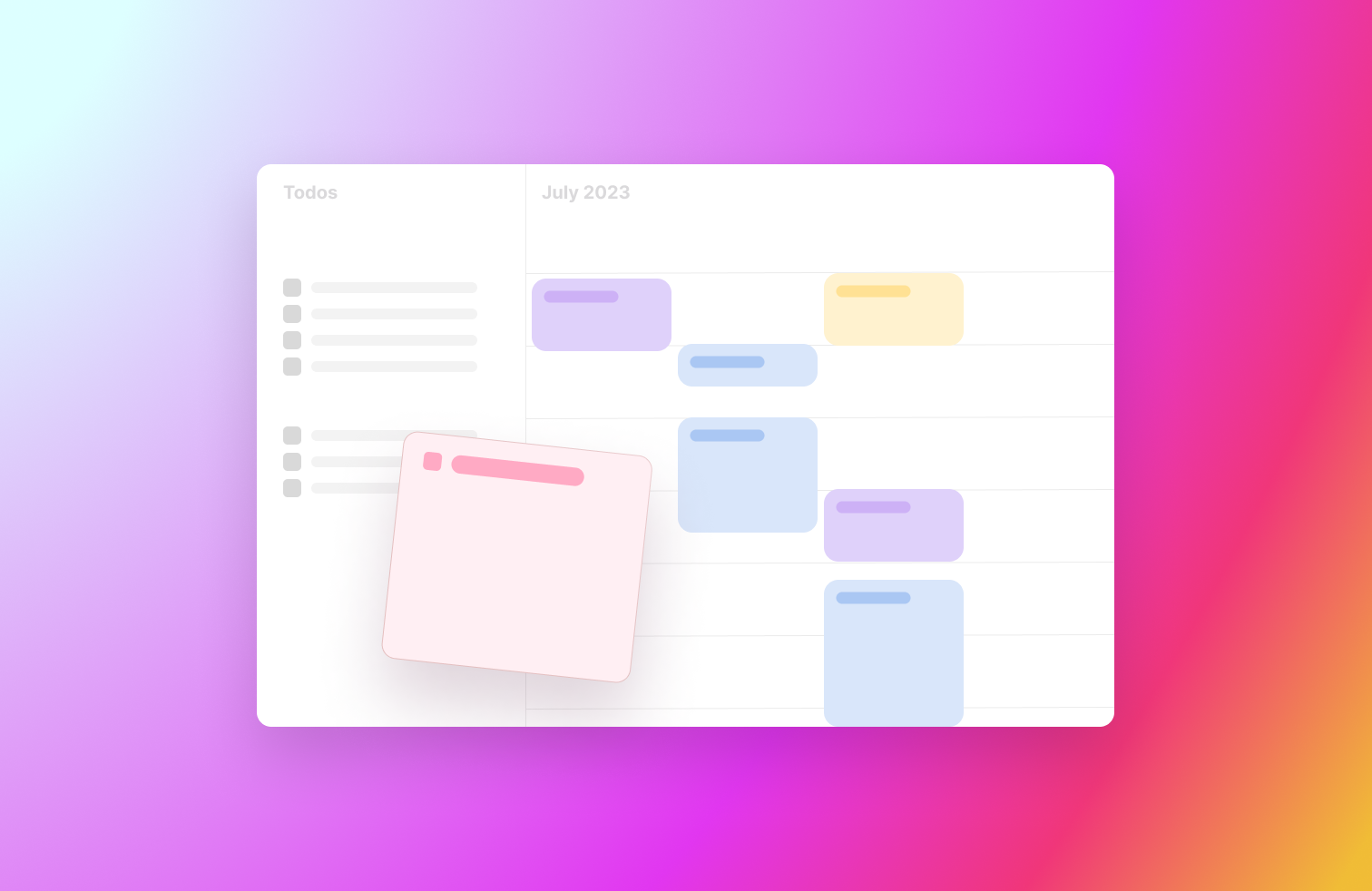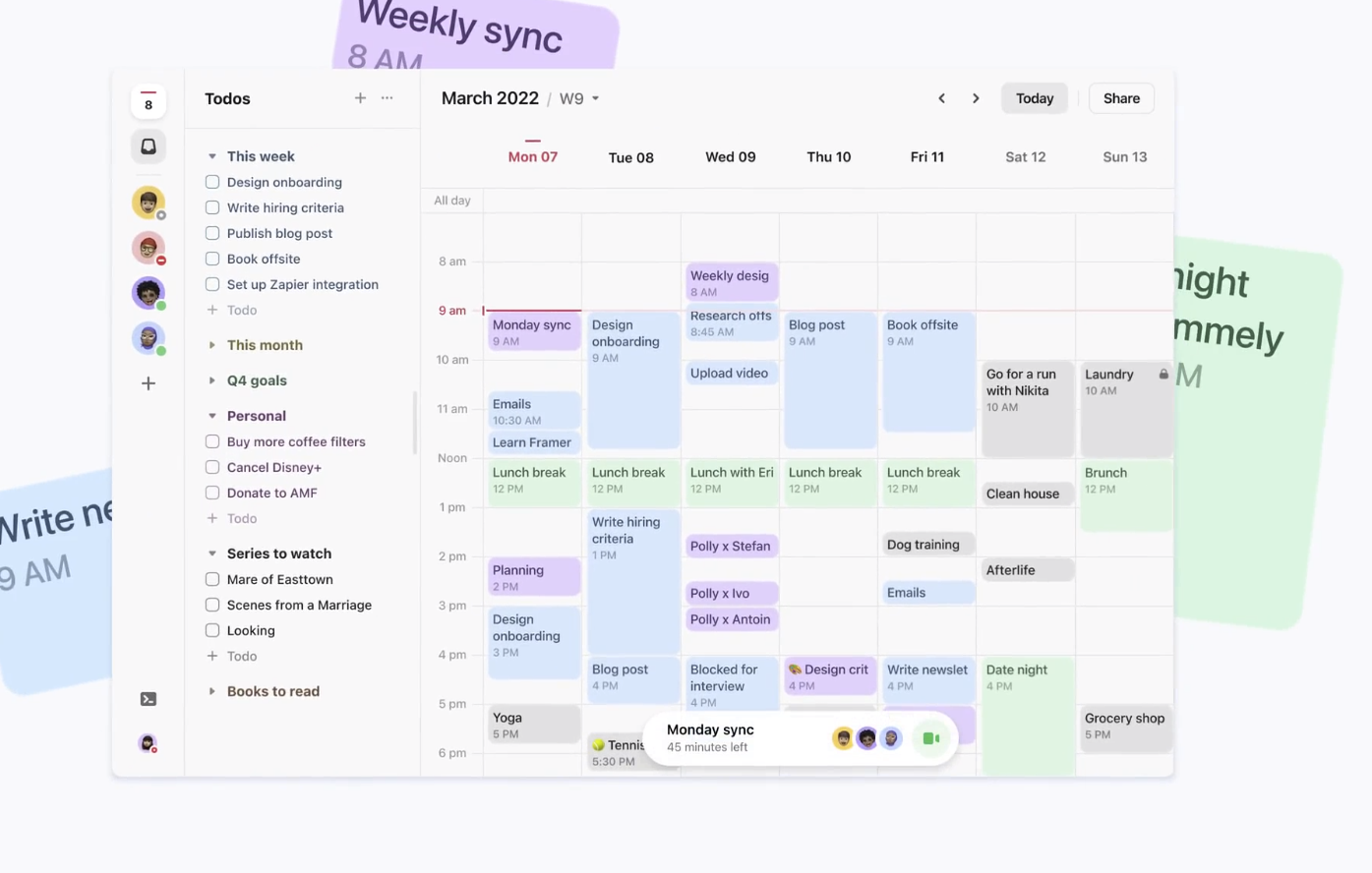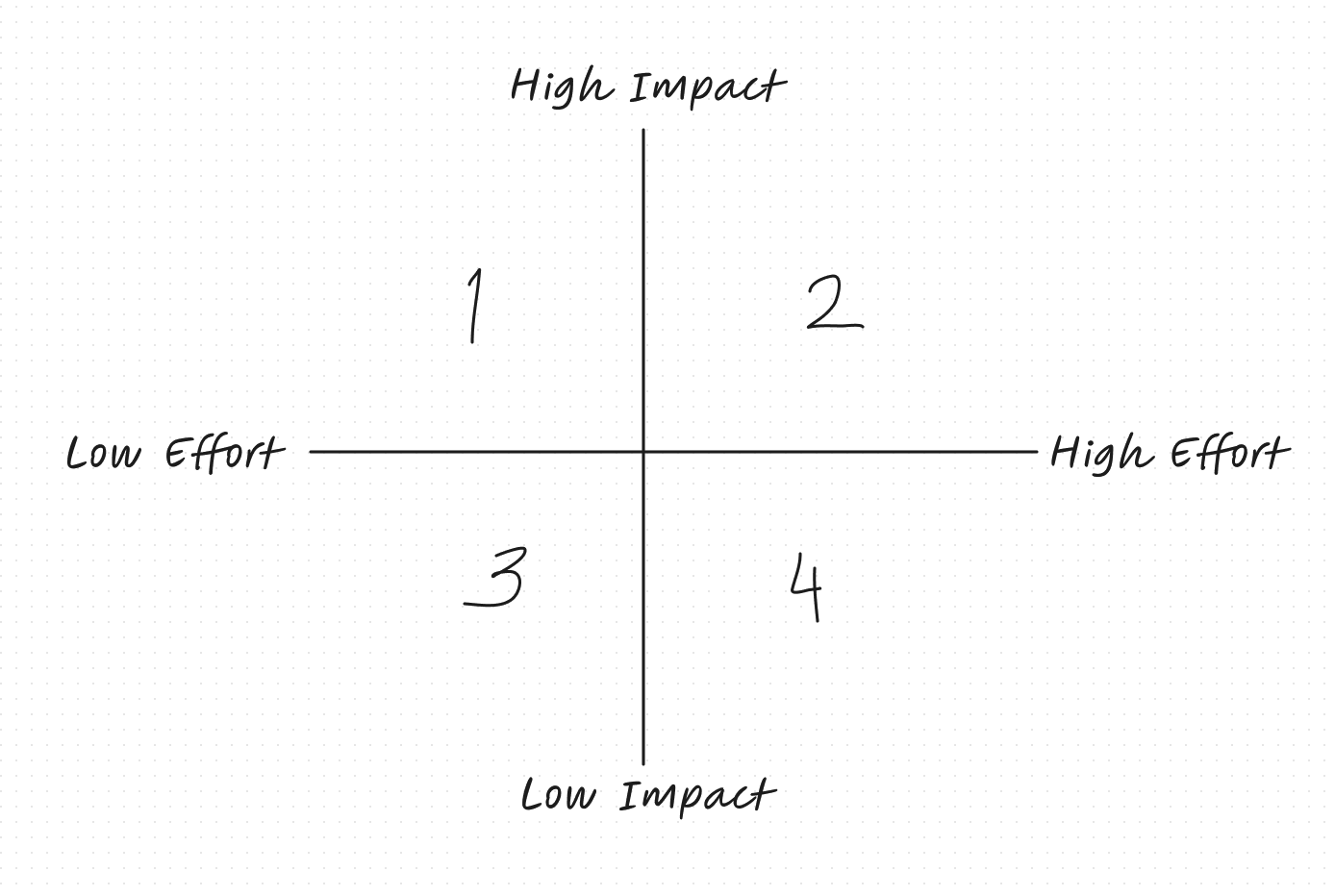How I Manage My Tasks & Reach My Goals as a Startup Founder
Putri Karunia • 2023-07-14
There are a thousand things to do, you work tirelessly, and yet the important things don’t seem to get done and your goals seem as far as it was last quarter. In this blog I’ll cover the system I follow to manage my tasks to reach my goals every week & every quarter.
There are a thousand things to do, you work tirelessly, and yet the important things don’t seem to get done and your goals seem as far as it was last quarter.
This is how I feel for a long time as a startup founder. There’s always something going on, people asking me questions, customers asking for help, somebody suggesting something, somebody else pointing out an issue, all of which are pressing and require me to spend time to get to the root of it and solve the issue or unblock their tasks. The more team members we bring in, the less time I have. It’s counter-intuitive as the expectation was that hiring more people would free up more of my time.
I also noticed that I started getting overwhelmed and missing things I needed to do or reply to. As there are more people pinging me at any time of the day, I tend to react immediately to the message. On the occasions when resolving a message in Slack requires me to open Gmail, I ended up getting pulled into replying to some more pressing problems from my email. The worst part is while I’m holding this stack of issues in my little brain, someone would talk to me and ask me an entirely different question. And it all falls apart. I have a bunch of apps open, half-drafted messages everywhere, and I forgot what I was doing.
It was really frustrating.
I figured, this is stupid and it’s not going to work. So I started finding solutions.
The first thing I did was made the obvious to-do list. It was helpful to see what I have and haven’t accomplished that day, but it didn’t help in making sure things get done. The tasks just seem to flow into the next day, and then the next week, until I’m tired of writing down that same thing.
Then I found this tweet from Guillermo (CEO of Vercel) and was wondering what that “A” logo is.
I found Amie. It’s a calendar app + a to-do list. The idea is that you’ll drag your to-do list and schedule it in your calendar.
I thought it was silly. But I loved the design so I tried it anyways. Knowing how I’ve always pushed off my tasks in favor of more urgent issues, I know I can’t commit to the time I’ve scheduled for each task. And it’s true, I do end up moving all the tasks around due to wrong estimation and generally not wanting to do certain things 😅.
But it helped a lot. This method is one of the reasons why I can achieve my Q2 goal in 2023, knowing precisely what I did and what I achieved and having a clear system on how to make sure Q3’s goals are also achieved. I’ll tell you how it works in more detail below.
Along the way, I also found the book “The Great CEO Within” by Matt Mochary, I’ve only read the free sample here and it’s amazing. Much of the framework on individual habits (the part relevant to our topic here) is similar to what I have already been doing. However, it includes a couple of additional tips and validates some of the things I have done, making them more concrete.
So, here’s the system that I followed to reach my goals:
Step 1: Set a company mission
This is something very basic but often overlooked. Not having a mission causes you to jump from one idea to another as newer things pop up, as competitors pop up, as you always see the grass greener on the other side.
It always seems like there’s a new venture to do that’s easier & faster to reach a certain ARR. You see some companies suddenly went from 0 to $1M ARR in no time, they started after you, with only 2-3 people in the team, bootstrapped, and have reached heights you haven’t reached yourself. There’s always something better, something that promised a lot more than what you have going on.
We’ve learned this the hard way. We’ve pivoted many times, always moving to another thing when things get hard. And every time we found that the new thing is just as hard or even harder than the last thing.
Setting a company mission is important overall, it helps you set out a clear goal and stick to it. It helps your product to have a clear objective and helps your employees to have a guiding north star. There’s no way to lead a company to achieve something if you don’t believe in the thing you’re trying to achieve.
Step 2: Set a goal for this quarter and make it clear how that goal helps move the needle forward toward the mission
Setting a goal is not always straightforward. It’s easy to get pulled into setting a goal for your KPI without any specific thing in mind. For example, setting a goal for reaching $X MRR by the end of the quarter with no specific “how” to reach that goal is the same as setting yourself up for failure.
The better way is to set down a specific goal so that you can sort of see the steps towards it while making sure that that goal is both aligned with the mission and your expected KPI results. For example, we went through a shift in target market during Q1 of 2023, so our goal for Q2 was to tailor the product more towards creators and attract more creators, digital entrepreneurs, and services to use our product. There are clear ways that each department can see how to achieve this.
From the product side, it will be making products/features that solve creators’ problems and making the user experience less technical so it’s better suited for our new market. From the marketing side, we explored marketing on other channels like TikTok and Instagram to attract more people from there.
Step 3: Every week, start with a set of things you need to do to reach your goal
When writing down your action items, don’t limit it to only what you can do in that week. Just write everything, leave nothing behind. From there, make a quick chart like this:
Then mark each task on which quadrant they lie on. Start with things numbered 1. These are the lowest-effort things you can do that gives you high impact. Strike down things numbered 4.
Then start picking on what you want to do this week.
You should do this every week, as you’ll always have new information, new insights, and inspiration. Something you thought off last week might no longer be relevant this week. Make sure to always evaluate your tasks to ensure that it is helping you reach that goal.
Step 4: Every day, start by scheduling your tasks for the day
Pick from the things you want to do this week and schedule it in your day.
- Top Goal Task: Dedicate at least 2 hours to work on the task that is your Top Goal. Block it out on your calendar, and make sure to focus only on that task within the blocked time. The best time to work on this task is when it’s quiet for you, usually earlier in the day.
- Inbox Zero: While it’s distracting to keep on replying to people, it’s also important to unblock your team members and answer any urgent issues promptly. The way to prevent this from eating up your time is to dedicate time to it. I usually do this 2x a day, one of which is just a quick skim if anything is urgent. For me, the evening is the “rush hour” since our team is in Indonesia and they’re online from around 6 PM onwards. So I schedule mine this way:
- Morning Catchup: Skim Slack & Gmail to see if anything is urgent. Unfortunately, you can’t peek at “subject lines” on Slack, so just open it, and if it doesn’t require an immediate response, mark it as unread. For Gmail, I just read the subject lines and only reply if it needs an immediate reply.
- Evening Catchup: This is when people are asking me questions anyway, so I decided to reply to them at this time. I will check all the messages in Slack & Gmail and see what needs to be done to reply. If it’s a task that requires more than 1-2 minutes, I put it into my task list. For example, reviewing a PR goes into the task list. If it’s a question then I answer right away.
Most of the messages are “tasks”, and putting them down in your task list allows you to evaluate when you need to do them, how much time you’re gonna spend on each one, and make sure you don’t miss any of them.
This is what my to-do list looks like:
- Recurring
- Morning Catchup
- Evening Catchup
- Twitter Posts (I make 3 posts every week, I set 1 afternoon every Tuesday to do this)
- Lunch 🍱
- This Week
- The list of tasks I want to do this week
- I move them into Today at the beginning of the day
- Today W28 (I write down the week so next time I can look back on what I did)
- List of things I want to do “today”. By the end of the day, I’ll aim for everything here to be done. If moved to the next day, i’ll move it back to “This Week” first and then put it back into “Today” the next morning
- Everything here is ideally scheduled throughout the day in the calendar
- Next
- These are the leftover tasks that I’ve written down but don’t think can be done this week
- I’ll look back into this next week
Step 5: When doing a task, try not to do other tasks.
Sometimes, your task requires you to go to Twitter, Slack, or your phone, and you see something there and you’ll start reacting. A useful thing with Amie is that you have this little thing on the menu bar telling you what you should be doing right now.
Sometimes there are more important things to do, or your previous tasks take longer than expected. It’s okay to move your tasks around and adjust. Just remember:
When you’re moving a task away, you are consciously moving them away to make time for another task.
This way you know what you’re sacrificing, you know what you’re putting away. This helps in making sure you’re not blindly moving your tasks from today to tomorrow to next week.
Step 6: Balance your tasks between what needs to be done vs what you want to be doing.
Sometimes, what you’re really interested to do isn’t the most important thing to do. You should make time for it. Why? Because being able to do what you’re interested in is part of what makes being an entrepreneur fun. At least for me, I love building things and solving new problems. So I make time to explore some UI/UX problems that I see started emerging in our product even though it doesn’t need fixing right away or if it’s not a sure thing yet.
If I take that away and just do the important things, I’ll lose the fire that made me want to work on the startup in the first place!
Of course, keeping in mind what you’re sacrificing helps to not get carried away and regret it at a later time when you found you’ve just done a bunch of things for no reason.
Closing thoughts
Everyone loves to check that box, mark it as done. But sometimes you’re deluding yourself by doing “busywork” that doesn’t move you towards that goal. Here’s a YC explanation about it.
Mindfully writing down your tasks, keeping in mind what your goal for this quarter is helps in making sure that every task that you put down moves the needle towards this goal.
And always keep in mind, to be honest with yourself. I heard this quote a lot from Naval Ravikant:
“You must not fool yourself, and you are the easiest person to fool.” - Richard Feynman
This applies to anything, including the tasks you decide to work on and how much worth you put into them.
So, every morning, set a time to sip your coffee while thinking about the age-old question “What do you want to do today?”
I usually use pen and paper before moving them to my calendar. I noticed that when using my laptop, I always saw either Slack, my browser, or the code I was debugging yesterday, then “accidentally” read something and got absorbed into it.
Thanks for reading 💕
I hope this helps all of you busy people out there. I’d love to learn how you all approach managing your tasks as well. Share your thoughts if there’s anything specific you want me to cover. If you enjoy this post, I’d love to hear it!
Cheers,
Putri




